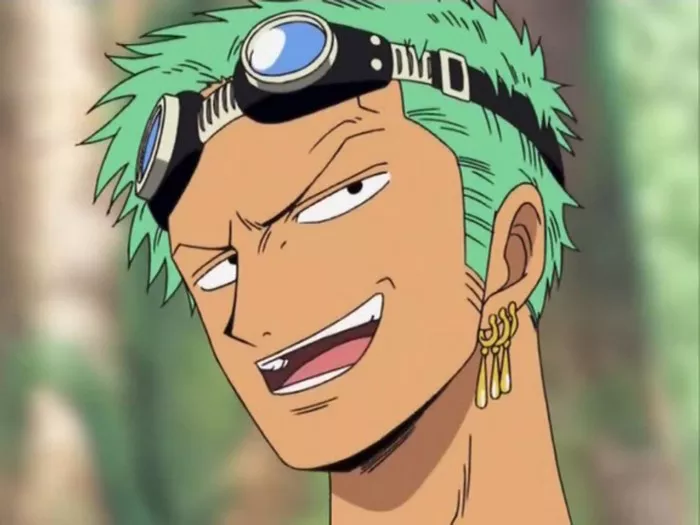Roronoa Zoro, one of the central characters in the globally acclaimed manga and anime series “One Piece,” is renowned for his formidable swordsmanship, unwavering loyalty, and… notorious sense of direction—or lack thereof. Throughout the series, Zoro frequently finds himself lost, often comically separated from his crewmates despite his exceptional combat skills and strategic prowess. This article delves deep into the reasons behind Zoro’s chronic disorientation, explores the comedic and narrative implications of his directional challenges, and examines fan theories and explanations that attempt to unravel this enduring mystery.
Roronoa Zoro
Roronoa Zoro, commonly referred to as “Zoro,” is the swordsman of the Straw Hat Pirates, led by the protagonist Monkey D. Luffy in the world of “One Piece.” Known for his distinctive green hair, three-sword fighting style (Santoryu), and stoic demeanor, Zoro is depicted as a fiercely dedicated warrior with a strong sense of honor and duty. Despite his formidable skills in battle, Zoro’s inability to navigate simple directions provides a recurring source of humor and plot development throughout the series.
The Phenomenon of Zoro’s Directional Challenges
Comedic Element
Zoro’s directional challenges are a consistent source of comedic relief within the otherwise intense and action-packed storyline of “One Piece.” His propensity for getting lost often results in humorous situations where he inadvertently ends up in bizarre or inconvenient locations, much to the exasperation of his crewmates and the amusement of readers and viewers alike.
Narrative Function
Beyond comedy, Zoro’s directional struggles serve several narrative functions:
Character Quirk: Zoro’s tendency to get lost adds depth to his character, showcasing a humorous flaw that contrasts with his otherwise serious demeanor and fearsome combat abilities.
Team Dynamics: His navigational challenges contribute to the dynamics within the Straw Hat crew, highlighting both the frustrations and the camaraderie that emerge from his frequent separations and subsequent reunions.
Plot Device: Zoro’s detours often lead to unexpected encounters and subplots, driving the storyline forward by introducing new characters, challenges, or opportunities for character development.
Analyzing the Causes of Zoro’s Directional Ineptitude
In-Universe Explanations
Several in-universe explanations attempt to rationalize Zoro’s perpetual state of disorientation:
Lack of Sense of Direction: Zoro himself acknowledges his poor sense of direction, often attributing it to his focus on training and battle rather than paying attention to his surroundings.
Purposeful Plot Device: Creator Eiichiro Oda has confirmed that Zoro’s directional challenges are intentionally exaggerated for comedic effect and to maintain the dynamic pace of the narrative.
Running Gag: Zoro’s navigational ineptitude has become a recurring running gag throughout the series, embraced by fans and incorporated into both serious and light-hearted moments.
See Also: one piece what character are you quiz
Theories and Fan Speculation
Given the enduring nature of Zoro’s directional challenges, fans have developed various theories and speculations to explain—or playfully exaggerate—his tendency to get lost:
Theory 1: Zoro’s Internal Compass
Some fans humorously suggest that Zoro possesses an “internal compass” that instinctively leads him astray, as if drawn to the most inconvenient or peculiar locations possible. This theory underscores the consistency of his directional mishaps across diverse environments and circumstances.
Theory 2: Symbolic Representation
In a more symbolic interpretation, Zoro’s navigation difficulties symbolize his unconventional approach to life and his willingness to forge his own path, even if it means getting lost along the way. This theory resonates with Zoro’s character as a fiercely independent and determined warrior.
Theory 3: Psychological Explanation
Psychologically, Zoro’s directional challenges could reflect a subconscious desire for solitude or introspection amidst the chaos of his adventurous life. Getting lost may offer him moments of solitude to reflect on his goals and motivations as a swordsman.
Impact on Plot and Character Development
Zoro’s directional ineptitude has had significant impacts on both the plot progression and his own character development throughout “One Piece”:
Solo Adventures: His detours often result in solo adventures where he confronts challenges independently, showcasing his growth as a swordsman and leader within the crew.
Bonding Moments: Separations from the crew due to getting lost provide opportunities for Zoro to bond with other characters or develop new skills that contribute to his growth as a warrior.
Humorous Interactions: Reunions with the crew after getting lost lead to humorous interactions and reinforce the strong bonds of friendship and loyalty that define the Straw Hat Pirates.
Comparative Analysis with Other Characters
Zoro’s directional challenges set him apart from other characters in anime and manga, where navigation skills are often portrayed as basic or secondary abilities. Unlike characters known for their acute senses or navigational expertise, such as Hunter x Hunter’s Kurapika or Naruto’s Kakashi, Zoro’s struggle adds a unique layer of complexity and humor to his persona as a formidable warrior.
Fan Reactions and Popularity
Zoro’s directional challenges have become a beloved aspect of his character, contributing to his enduring popularity among fans of “One Piece.” Memes, fan art, and cosplay often playfully reference his navigational ineptitude, celebrating it as a defining trait that enriches his personality and distinguishes him from other anime protagonists.
Evolution of Zoro’s Characterization
Over the course of “One Piece,” Zoro’s character has evolved from a stoic swordsman focused solely on becoming the world’s greatest swordsman to a multifaceted individual whose directional challenges humanize him and endear him to fans. His journey from East Blue to the New World has seen him confront formidable opponents, navigate complex moral dilemmas, and grow as a leader within the Straw Hat crew—all while occasionally taking a detour or two.
Conclusion
Roronoa Zoro’s chronic disorientation is not just a quirky trait but a defining aspect of his character in “One Piece.” Whether attributed to comedic effect, narrative convenience, or symbolic resonance, his directional challenges have enriched the series with humor, plot dynamics, and opportunities for character development. As “One Piece” continues its epic journey, fans eagerly anticipate where Zoro’s internal compass—or lack thereof—will lead him next, ensuring that his legacy as both a swordsman and a perpetually lost navigator remains a cherished part of anime and manga history.


